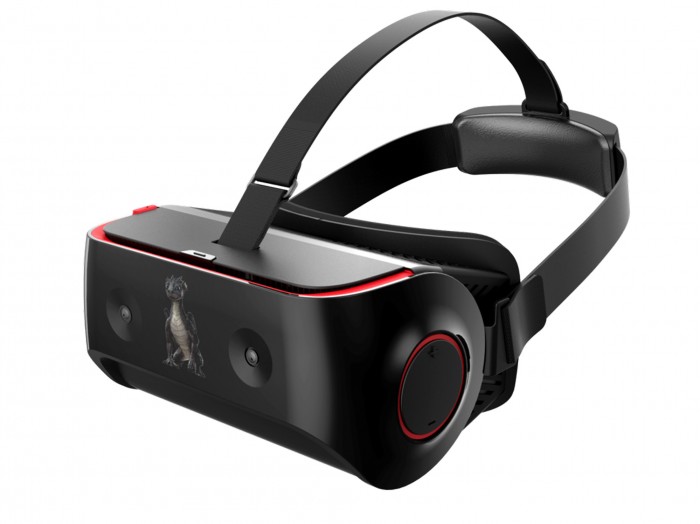High-End, Cord-Free VR Headsets Are Nearing Reality
The octopus was about five feet off the ground, over my right shoulder. I turned and stepped closer to walk around it. Anyone watching might have thought I looked silly—I had a bulky black virtual-reality headset strapped onto my face. But at least there wasn’t a cable running down my back to connect it to a PC.
That lack of a cord sets the headset I tried apart from leading devices on the market today. Mobile chipmaker Qualcomm is showing only that one limited demo, which isn’t interactive. But the VR820 design may anticipate the kind of device that will make virtual reality much more widely used.
Headsets that rely on a smartphone for their display and processing power, such as Samsung’s Gear VR or Google’s Cardboard and forthcoming Daydream, are another way to experience virtual reality without cables. But they can’t track the position of your head in space, which is necessary if you want to move around a virtual space to inspect, say, an octopus. You can turn your head to look around, but your view doesn’t change if you stand up or lean forward.

High-end headsets like Facebook’s Oculus Rift and HTC’s Vive can track your head position, allowing more realistic exploration. But they need tethering to a powerful PC and require you to install positioning hardware wherever you want to use your device. Qualcomm’s headset tracks your position using internal motion sensors and a camera looking out from the device. A self-contained device can’t match the power of a gaming PC, putting some complex graphics off limits. And it's not clear how close Qualcomm's device comes to matching the accuracy of the position tracking of the Rift or Vive. But Qualcomm says it can support rich 3-D games and experiences.
Qualcomm won’t sell headsets. It is offering its designs to hardware companies in the hope they will build their own versions, boosting chip sales. The first companies doing that will reveal themselves in the next few months, Qualcomm predicts.
Intel unveiled its own all-in-one headset design earlier this summer and is pursuing a similar strategy, but it has not yet made its device available to try (see “Intel and Microsoft Are Teaming Up to Make VR Ubiquitous”). All-in-one headsets of various kinds are already on the market in China.
Hugo Swart, a senior director of product management at Qualcomm, says headsets built to his company’s plans should be similar in price to a high-end tablet. That would make them $500 or under, much less than the $1,400 or more for an Oculus Rift and compatible PC.
Keep Reading
Most Popular
Large language models can do jaw-dropping things. But nobody knows exactly why.
And that's a problem. Figuring it out is one of the biggest scientific puzzles of our time and a crucial step towards controlling more powerful future models.
How scientists traced a mysterious covid case back to six toilets
When wastewater surveillance turns into a hunt for a single infected individual, the ethics get tricky.
The problem with plug-in hybrids? Their drivers.
Plug-in hybrids are often sold as a transition to EVs, but new data from Europe shows we’re still underestimating the emissions they produce.
Stay connected
Get the latest updates from
MIT Technology Review
Discover special offers, top stories, upcoming events, and more.